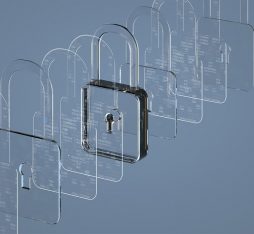Quantum computers can complete in a matter of moments tasks that would take today’s computers hundreds of years. However, these vastly increased computational capabilities could pose a challenge to today’s cryptographic systems.
Orange is preparing for this by working on more robust mechanisms and drawing on the properties of quantum communications, thanks to QKD (Quantum Key Distribution) solutions.
These solutions are still very costly.
Led by Orange, the project to build a quantum backbone in Île-de-France should facilitate progress with this technology, which boasts astonishing properties.
Jérôme Colombain: This is being called a real revolution. One that will push the limits of the power of computers, enabling calculations and simulations that would currently take months or years to be performed in mere minutes. I’m talking about quantum computing, a revolution with repercussions we cannot yet know, but which will certainly have an impact, even on our daily lives. Welcome, Eric Hardouin.
Eric Hardouin: Hello.
JC: You are research director at Ambient Connectivity at Orange. Let’s start off with a simple question: what is quantum computing exactly.
EH: Perhaps we should begin with a reminder of what quantum physics is in order to understand the basics of the basics. Quantum physics is based on the principle that, when we place ourselves on an extremely small scale, the scale of particles, we have sizes that cannot take on just any value. The energy levels that electrons in an atom can take on are quantized. They can possess certain values, which are a set of discrete values.
JC: So this changes our entire view of things. Quantum computing has nothing to do with today’s computing, right?
EH: Quantum computing is indeed a breakthrough. So it’s not for right now. Only a few weeks ago I happened to ask a physicist from Ecole Polytechnique: “So when will we be getting multitask quantum computers at an affordable price?” He answered, “nobody knows.” Depending on who you ask, it will be “in 20 years or even a little earlier.” But in reality, we don’t know.
JC: We are starting to see a few things though, aren’t we? Here and there.
EH: Yes, at present these are mostly experiments. In other words, we have players like Google or IBM who have quantum computers that work but that can only perform a single task. They can only solve one algorithm. And on top of that, they are very expensive. They have to be cooled down to near absolute zero. So it’s not like we’ll have them in our living room tomorrow.
JC: We’re going to talk about a particular issue that is linked to quantum computing, which is that this super powerful computer, whenever it arrives, will be able to bypass all our current security systems. In other words, everything that relies on what are called RSA encryption keys, thus banking systems, military communications, etc. Security will no longer exist, but fortunately you and other researchers around the world are already preparing for the future.
What will actually happen?
EH: It’s important to understand that, at present, all cryptographic mechanisms are based on the complexity of solving mathematical problems. But quantum computers will arrive that will have computing capacities ten times greater than those today.
JC: So for them, it’s a piece of cake.
EH: They will be able to do in minutes what would take hundreds of years to do with today’s computers. So yes, this calls into question the foundations of our current cryptography. And for that, there are two main avenues that are being explored right now. There is what’s called “post-quantum” cryptography, which consists of defining cryptographic mechanisms that will be robust to the computing capacities of quantum computers.
And then there’s the one I am working on, in the research field I have the pleasure of leading: quantum communications. The aim is to use the special properties of quantum physics to be able to co-construct encryption keys in such a way that, at least mathematically, if a spy tries to intercept the messages that enable this key to be constructed, each of the two authorized ends of the chain will realize this. And as a result, we will be able to see that the communication is compromised.
JC: So, in concrete terms, how do you do this?
EH: There are several mechanisms. One of the best known mechanisms uses photon polarization. And the fact is that if you measure the photon, if you try to capture its value roughly, you’re going to change its state irrevocably.
JC: With quantum physics, as soon as you start looking at what’s going on, what’s going on has already changed, so you can’t see the truth, the reality.
EH: We will be able to detect if someone else before us has been fiddling with the photons and therefore has tried to intercept the signal. Without going into detail, that’s the main principle that makes it possible – again mathematically – to ensure that the cryptographic keys we’ve constructed are not known by a third party.
That’s the theory. In practice, with hardware imperfections and implementation flaws, it’s not at all impossible that a pirate could in fact still manage to capture the keys. This is the whole point of our research work: to ensure that we achieve systems that are reliable in practice.
JC: It’s really incredible. You imagine scenarios of cyber attacks, cyber espionage, with technologies that don’t exist yet, that are going to disrupt everything?
EH: In fact, they do exist. We now have commercial systems that rely on quantum communication for key exchanges, the co-construction of secure keys, what we call QKD, “Quantum Key Distribution.” The problem is that this equipment is very expensive. I don’t know if I can give you an exact figure, but it costs hundreds of thousands of euros to secure just one chain between a transmitter and a receiver.
So you can understand that there are very few people who can afford such a security system. And what’s more, it requires dedicated fibers, what we call dark fibers. So dedicated fibers that will only be used for that system, between what we call “Alice and Bob”: A and B.
JC: Which are, by the way, the two names that are always used for this kind of example.
EH: Exactly. So you have to have a dedicated fiber. And a dedicated fiber is expensive. And we don’t always have it. So the challenge for us – and this is what we’re working on at Orange research – is, on the one hand, to reduce the cost of the equipment needed to implement quantum communications and, on the other hand, to ensure that we can reuse our existing network infrastructure and finally ensure coexistence, on the same fibers, between photons that will carry quantum information for QKD and the usual photons that are used to transmit TV and video; in other words everything that we do today with our fixed networks.
JC: Is that why you’re involved in this quantum backbone project at Saclay?
EH: That’s the Paris Region QCI project. It’s a project that started at the beginning of the year with Nokia and Thalès, in terms of large groups, and then a certain number of start-ups and academic players. So it’s a project led by Orange that aims to build a quantum backbone between Orange Gardens in Châtillon and the Saclay plateau, with a node in Paris to connect the various laboratories involved in the project.
It’s a project that’s financed by the Ile-de-France region, so the interest, or challenge, for us is threefold. On the one hand, it’s to be able to test solutions for quantum communication at a lower cost, since one of the partners in the project is a small start-up called Kets Quantum, which promises to reduce the cost of quantum equipment by a factor of 1000. So dropping from hundreds of thousands of euros to hundreds of euros, which makes it much more affordable. So we’re going to test their product on this experimental network, which we’re in the process of building.
The other challenge for us is to acquire the know-how to build a quantum network. Because the problem with these networks is that as the fiber absorbs light, it absorbs photons. So what we do in traditional physics is use optical amplifiers, which allow us to extend the signal and regenerate the signal periodically to ensure that we can give the signal a boost when it’s too attenuated. And then it goes on for a few hundred kilometers.
JC: And you can’t do that with quantum physics?
EH: It can’t be done with quantum physics because there’s no quantum amplifier; it’s physically impossible. This means that we have to have the lowest possible attenuation in the fiber if we want to go as far as possible. And when I say as far as possible, the limit is actually between 100 and 200 kilometers, I believe.
JC: In concrete terms, does this mean that these systems will have to be used in the future by companies, by the military, and perhaps by us individuals too, in order to secure our communications?
EH: Maybe. It’s clear that today we’re seeing quite a significant amount of interest from certain players such as government departments: the police, judicial system, the military, which have confidentiality needs that are not the same as yours and mine. And on the other hand, we have banks that are also very interested in this technology.
JC: When you say the banks, does that also involve us individuals?
EH: Ultimately, yes it’s for us. What you have to understand is that we’re very limited in terms of throughput; in other words, the throughput is from a few dozen kilobits per second to one megabit per second. Another important point to understand is, if we want to ensure the protection, I would say in the very long term, of the data exchanged – because we were talking earlier about the capacities provided by quantum computers to crack cryptographic codes – a means of attack that also exists is “I capture the signal, I store it on my hard disk and then I wait five years, ten years, twenty years, for the technology to have progressed and later, when I have the capacity to crack the code, I crack it.” We have a technique that ensures that this won’t happen. It’s called the One Time Pad and the principle is to transmit a message that’s the length of the cryptographic key. But if the key throughput is very low, the message throughput will also be the same, so a maximum of one megabit per second. So, if I tell you today that from now on your throughput is going to be one Mbit per second at your home, you’re not going to be very happy.
JC: That’s for sure.
EH: This raises issues about data that can be transferred.
JC: It’s amazing, and fascinating. Thank you very much. Eric Hardouin, Research Director at Ambient Connectivity.
EH: Thank you very much.







